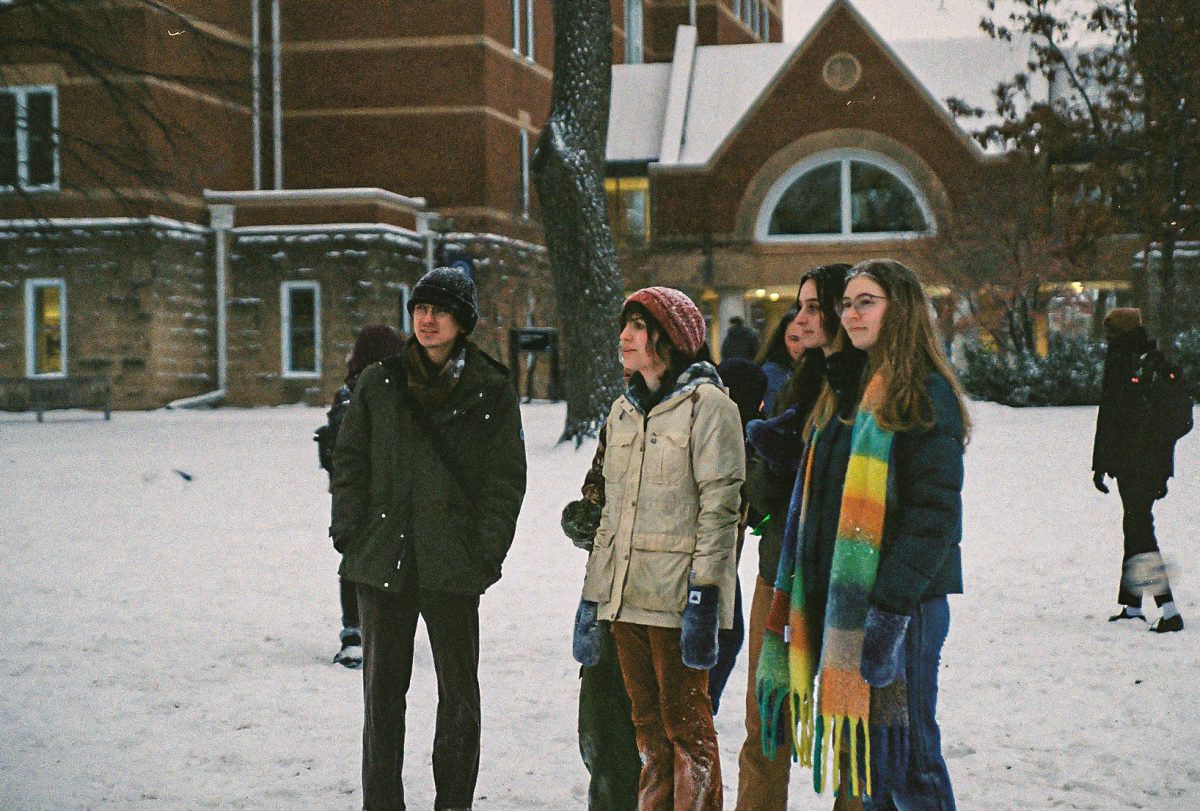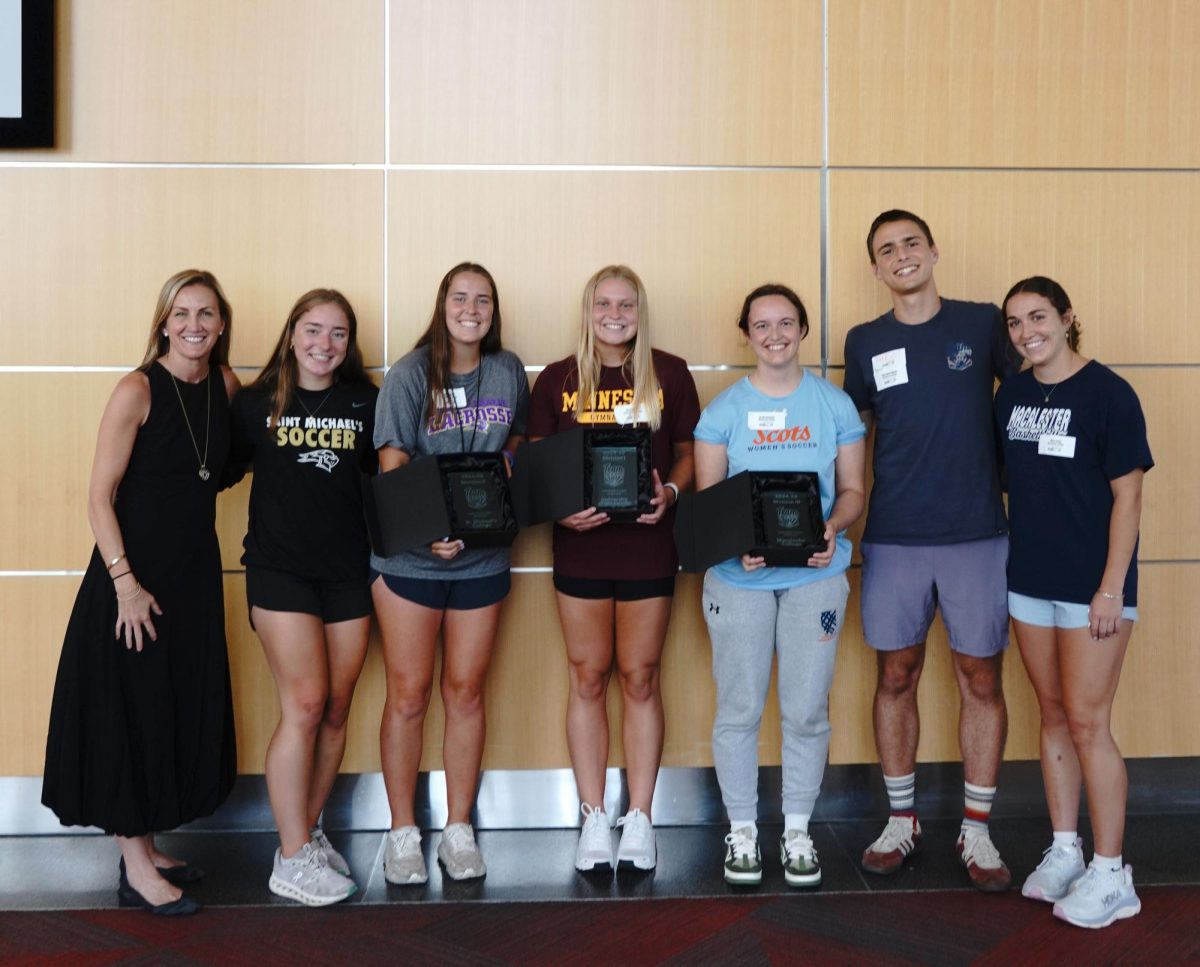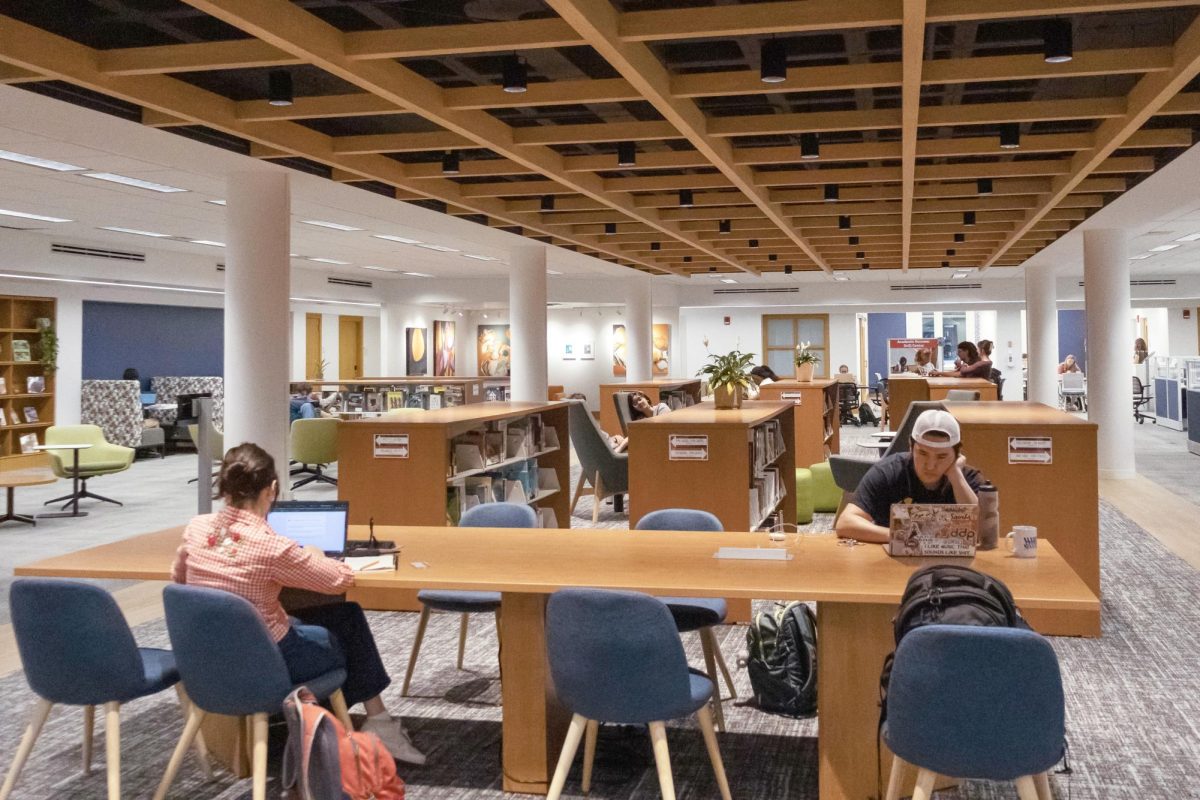Colleges and universities across America are at a tipping point. Macalester is pushing for an ambitious strategic plan, but a nationwide shift in demographics and changing attitudes toward higher education point to an upcoming battle for colleges to stay afloat in the coming years.
During the Great Recession in 2008, birth rates in the US slumped. Children born around the Great Recession are currently approaching college age, yet birth rates have not rebounded. Other changes also present challenges for higher education.
“In sum, over the next 15 years persistent trends in immigration, migration, and differential birth rates coupled with the recent acute birth dearth will markedly alter the college-aged population along dimensions of geography and race/ethnicity,” Nathan Grawe, an economics professor at Carleton College, wrote in his book Demographics and the Demand for Higher Education.
Vice President for Admissions and Financial Aid Jeff Allen acknowledges the challenges in trying to enroll the same number of students from a shrinking applicant pool.
“The demographic cliff is real,” Allen said. “What’s the phrase? ‘Demographics is destiny’ and the projections are very real. There will be 500,000 fewer high school graduates in 2030 than there will be in 2025. And so unquestionably, the very shrinking of the overall high school population will contribute to increasing competition among colleges and universities for students.”
When paired with a steady decline in Americans’ confidence in higher education, according to Gallup polls conducted between 2015 and 2023, outside factors force colleges into a corner. With fewer college-aged students and less demand for postsecondary education, college closures are on the horizon. Several have already closed.
So what can be done to cushion the blow?
“Policymakers have a real, if partial, ability to change the predicted course through policy innovations,” Grawe wrote.
Enter the Minnesota Private College Council, which Macalester is a member of.
“The Private College Council is an association of 18 private non-profit liberal arts colleges in Minnesota,” Paul Cerkvenik, president of the Minnesota Private College Council (MPCC), said. “Its mission is to serve the shared needs of the colleges and to advocate for public policy that serves the needs of students, advances the interests of private higher education, and strengthens the economic and civic fabric of the state.”
According to Cerkvenik, the MPCC will reach out to communities across the state to gauge how different legislation impacts them. For example, the MPCC lobbied for an increase to the Pell Grant, FSEOG, and federal work study in the 2025 fiscal year federal budget.
“Those are the three main financial aid programs that affect all students, public or private institutions, and so we’re advocating on those issues,” Cerkvenik said.
While Grawe points out that an increase in federal financial aid should help blunt the “demographic cliff” by encouraging more students to enroll in college, it may not be enough.
“Aggressively targeting income can mitigate the problem—but three-quarters of today’s gap would remain,” Grawe wrote. “[E]ven aggressive policy interventions are unlikely to eliminate [demographic changes] in the mid-term future. Instead, we must accept that this challenge will require sustained attention.”
So the MPCC’s continued work, lobbying and advocating for the interests of colleges such as Macalester done by the MPCC is vital.
“When you look at our surrounding states – North Dakota, South Dakota, Iowa, Wisconsin – it’s dramatically worse than Minnesota,” Cervenik said. “Minnesota does have a small demographic problem, but it does have two other challenges… Minnesota students have a tendency to go elsewhere and we don’t succeed at recruiting an equal number back. Interestingly, Macalester contributes to the effort to recruit students to come to Minnesota.”
The second challenge that Cerkvenik notes is that the number of Minnesota students entering postsecondary education is decreasing, from 71% of Minnesota high school graduates enrolling in college the following fall in 2013 to only 58% in 2022.
So while the impact of the demographic cliff may not impact Minnesota as much as the rest of the country, roadblocks are still present. Yet Grawe is optimistic about the future of higher education in Minnesota.
“[B]etween 2020 and 2029, Minnesota promises strong growth among elite college students,” Grawe wrote.
The article could end there: “Macalester can easily fill its freshman class every year,” Cerkvenik said. But Macalester does not appear content with sitting idly by or hoping for that promised growth. In 2022, the Board of Trustees (BoT) approved an expansive strategic plan to “secure the college’s future.”
So what has Macalester done to prepare for this plan? And what will they do to stay financially secure?
Part of Macalester’s financial security comes from the money that the college is already collecting.
“Sixty percent of the operating revenue comes from net tuition revenue, or the room and board revenues collected from students who are enrolling and of course, living and eating on campus,” Allen said.
Macalester’s most recent tax filing in May 2023 indicates a total of $186 million in total revenue between June 2022 and May 2023. That would mean $111.6 million of Macalester’s revenue is from tuition, room or board, equivalent to around $52,000 per student.
In the 22-23 academic year, the comprehensive fee to attend Macalester was $76,270.
“Since 2005, Macalester has been a need-aware admissions institution. Meaning that when we review applications for admission, a student’s and a family’s financial need level is necessarily one factor, among many, that’s considered when we make admissions decisions,” Allen said. “So along with all of the other variables that you would imagine—academic background, personal talents and perspectives—that need to fulfill the college’s revenue goals is also part of the admissions process.”
In 2023, a New York Times article found that when it comes to college admissions, “being very rich is its own qualification.” Students with families in the top 0.1% are 2.2 times more likely to be admitted to an elite college than the average applicant, even when accounting for the fact that those students typically have “higher SAT scores and finely honed résumés, and applied at a higher rate.”
When discussing Macalester’s consideration of financial need, Allen did not say that the college gives preferential treatment to students who could pay full price.
While there are no plans to increase revenue from tuition during the strategic plan, Macalester will announce a capital campaign in Jan. 2025 to raise money to fund the construction of the new residence hall, increase financial aid support and finance other parts of the strategic plan.
“It will be the largest campaign Macalester has undertaken in its history,” Vice President for Advancement Joanna Curtis said.
Macalester will also hire an Associate Vice President (AVP) of Principal Giving in conjunction with the capital campaign who will focus on securing gifts of a million dollars or more.
“The capital project that we’re focused on primarily for this upcoming campaign is the new residence hall,” Curtis said. “And [the AVP of Principal Giving] will be focused on securing gifts for that naming opportunity, because it is going to be a big, big component of the campaign.”
The Advancement office has staff focused on planned giving or philanthropic giving, but no staff for multimillion dollar gifts.
“We have a lot of alumni and other donors who have the capacity and inclination to make gifts of a million dollars or more. We have not had the staff to be able to dedicate the time it takes to engage alumni who can make gifts of that size,” Curtis said. “We know that to accomplish what we want to accomplish [in the strategic plan], we’re going to need to secure gifts that are 1 million, 5 million, 10 million.”
The BoT only approved funding for the AVP of Principal Giving until 2030, the end of the strategic plan, but Curtis hopes that the position will stick around.
“In my perfect world, it will have shown that it provides such a high return on investment that it’s worth continuing to grow that program,” Curtis said.
Another source of revenue for Macalester is off-campus rent. The High Winds Fund, a division of Macalester, manages off-campus properties.
“The High Winds Fund Portfolio contains 5 commercial or mixed-use properties, two apartment buildings, a four-plex and 7 houses. The current market value of the real estate, investments and cash is roughly $28M,” Director of the High Winds Fund Deanna Seppanen wrote in an email to The Mac Weekly.
However, Macalester owns more property than that. An analysis of Ramsey County property records indicates that, excluding the main campus, Macalester owns 58 different properties, worth an estimated $46 million in current market value. These properties include specialty housing, the cottages on Macalester St. and buildings around Lampert.
Macalester rents out some of these properties, providing another form of income. According to Macalester’s tax filing, the college received just over $1.8 million in gross rents, resulting in an income of $1 million.
Colleges across the country are grappling with declining enrollment, resulting in less revenue. But Macalester’s policy of need-aware admissions, embarking on a capital campaign and renting property outside campus will help Mac weather the storm.
Macalester has attempted to position itself to be successful, not only in the next decade, but long-term, because as the BoT has made clear, the strategic plan intends to “secure the college’s future.”











